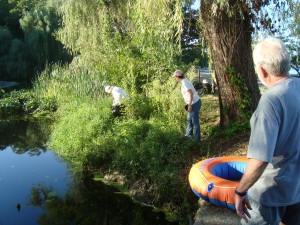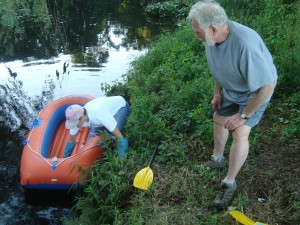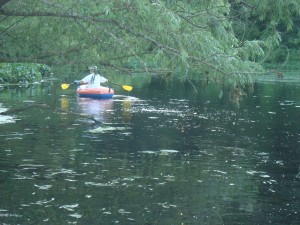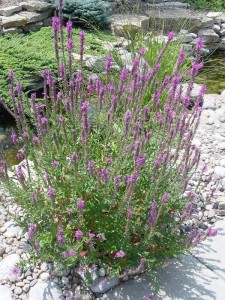
Early in September, three volunteers mounted a last-chance expedition to snag the few beautiful but dangerous Purple Loosestrife plants that had appeared on the banks of York Pond before they could release their seeds into the air. Each plant contains up to 2.7 million seeds, which explains the fields of Loosestrife where it has crowded out all other plants. This was a prospect no one wanted for York Pond.
Two members of the BPC’s Invasive Control Committee went after the plants while another, Elena Riverstone stood by—the boat is hers. Carrie Drake, a graduate, like Elena, of the special URI course on invasive plant species, showed Cynthia Bertozzi how to carefully hood the flowered stems in a plastic bag before cutting it off at the roots to avoid spreading the seeds.

First Cynthia worked on the River Road bank, her arms encased in long plastic gloves to avoid catching poison ivy. Carrie then rowed the maiden voyage of the rubber boat in York Pond to the south bank while Don Cordner—who had first sounded the loosestrife alarm—stood by, presumably ready to enter the water if need be.
The BPC has botanist Grace Donnelly to thank for first alerting us to the fact that one can do more harm than good by removing invasive plants with incorrect techniques. The Coastal Resource Management Council authorizes only people who take the URI course to remove invasives within 200 feet of the Narragansett Bay, or to supervise others in their removal.





